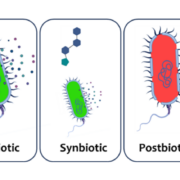Can Probiotics Prevent Respiratory Tract Infections in Infants and Children?
By Prof. Hania Szajewska MD PhD, Medical University of Warsaw, Poland
Imagine you are a primary care pediatrician practicing in an area where respiratory tract infections (RTIs) are particularly common during the winter months. Due to the seasonal surge in viral infections, you might find yourself seeing 20-30 children per day with upper respiratory tract infections (URTIs) at the peak of cold and flu season.
Children who attend daycare centers and kindergartens are especially vulnerable, experiencing up to four times more RTIs compared to those cared for at home (1). This is largely due to close contact and shared environments, making it easy for viruses to spread. About 95% of these infections are caused by five main viruses: rhinovirus, influenza virus, respiratory syncytial virus, coronavirus, and adenovirus. These viruses are primarily spread through airborne aerosols but surface contamination also plays a role. (1, 2)
Frequent RTIs in young children lead to missed daycare or school days, placing strain on families and increasing the need for healthcare visits. They may also lead to prescriptions for antibiotics, which can disrupt the gut microbiota and are associated with other health problems later in development. Severe cases of RTI may result in complications such as ear infections, pneumonia, or worsened asthma symptoms.
Preventing RTIs is essential for maintaining children’s health and reducing the burden on families and healthcare systems. This raises the question: Can probiotics help reduce RTIs in generally healthy young children attending daycare (3)?
The role of probiotics in preventing RTIs
Probiotics have gained attention for their potential to reduce RTIs, especially in children who are frequently exposed to infections in group settings like daycare and kindergartens. Initially the idea of ingesting probiotics into the digestive tract to prevent infections of the respiratory tract may seem counterintuitive. However, research has shown several potential mechanisms by which probiotics in the gut may help prevent RTIs:
- Enhancing the immune system
- strengthening the epithelial barrier
- producing antimicrobial compounds
- competing with harmful pathogens
While some mechanisms are strain-specific, others are observed across different types of probiotics.
Evidence from clinical trials
Comprehensive reviews and meta-analyses, such as a 2022 Cochrane review (4) have highlighted how various probiotics can lower the risk of RTIs. In children, 10 clinical trials showed that probiotics were more effective than placebo or no treatment in reducing acute URTIs. Key findings for the groups receiving probiotics include:
- 28% reduction in the risk of at least one URTI event (relative risk 0.72, 95% CI 0.58 to 0.89; P = 0.003; 2512 participants)
- 21% lower incidence rate of acute URTIs (rate ratio 0.79, 95% CI 0.65 to 0.96; 1868 participants)
- 41% reduction in antibiotic use for treating URTIs (relative risk 0.59, 95% CI 0.43 to 0.83; 1315 participants)
Most trials involved administering probiotics through milk-based foods, such as yogurt, over a period of three months or longer, with consistent benefits seen across various age groups (4).
Acting on the evidence
While further research is needed to make definitive recommendations, there are several steps you can take, based on the current evidence, to reduce the risk of respiratory infections:
- Use evidence-based probiotics: Although uncertainty remains about which strains are most effective, strains such as Lacticaseibacillus rhamnosus GG (formerly Lactobacillus rhamnosus) have been shown to reduce RTIs (5).
- Support immune health with a fiber-rich diet: A diet rich in fiber and fermented foods, such as kefir, sauerkraut, and fermented dairy products, can promote gut health and immunity.
- Focus on hygiene: Teach children proper hygiene practices, including frequent handwashing, proper sneezing and coughing etiquette, and regular sanitization of shared toys and surfaces, especially in group care settings.
- Responsible antibiotic use: Limit the use of antibiotics to when they are absolutely necessary, because overuse can disrupt the gut microbiota and weaken the body’s immune system.
Conclusion
While we await more conclusive research, probiotics offer a promising, low-risk approach to supporting immune health and reducing the frequency and severity of respiratory infections in children. Incorporating evidence-based probiotics, maintaining a healthy diet, and practicing good hygiene can help minimize the risk of RTIs, particularly in communal environments such as daycare centers and kindergartens.






